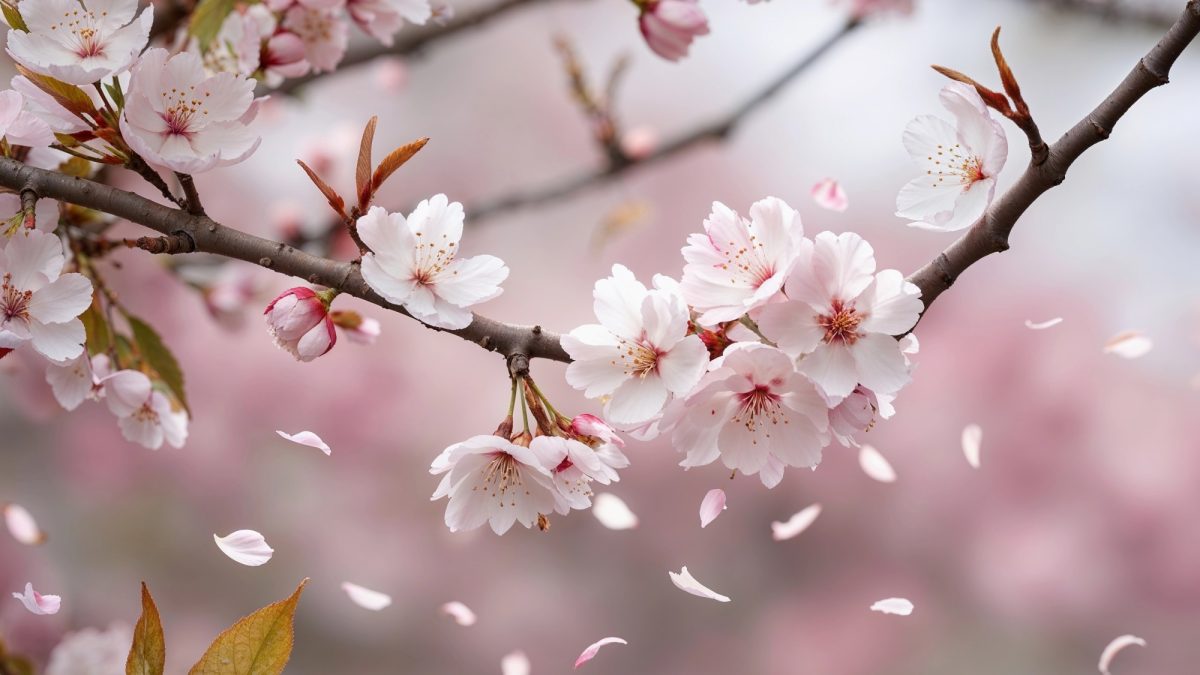When I was young and visiting Japan during spring break, the memory I recall most is sitting under and observing sakura trees. This event of flower-viewing, or hanami, as my aunt called it on the car ride there, was a very simple occurrence. You’d go to the nearest park or botanical garden, sit under a sakura tree, eat some delicious picnic food, and glance at a cherry blossom now and then. The rest of the event was often blurred out of my memory in the process of running around and spending time outdoors. The blossoms were nice, but it was slightly beside the point to me in the moment. It wasn’t until a good while later that my interest in literature and philosophy sent me down the rabbit hole of the long cultural history behind the sakura blossom.
One of the main things that escaped my notice is that hanami is—in some sense—an implicit religious festival. It is rooted in Shintoism, the original, animist religion of Japan, which suggested that natural things were a work of art. Whether it be the river, stone, bamboo, or birds, anything natural was something, not necessarily divine, but imbued with spirit. Most Japanese customs that date before the Meiji Restoration (i.e., a major contact with the outside world/Western civilization) have Shintoist underpinnings in their rituals, whether it be the philosophical martial arts, the respect-driven samurai code, or the structured tea ceremony.
The sakura bloom is one such tradition. It was made an official religious festival by decree of Emperor Saga during the Heian period. The celebration of the sakura bloom is a celebration of the beauty of flowers that die naturally with great haste, and thus a celebration of the beauty of the ephemeral and finite. Sakura trees, for those who are unaware, have a peak blooming period of a few days, after which the petals fall off rapidly and are replaced with leaves. Although there is a plethora of vocabulary describing the percentage of the blossoms blooming, all in an attempt to make the experience seemingly last longer, the flowers are often known for their stunningly brief beauty, which is swept away just as quickly as it came. This unfortunate, though inescapable, occurrence of the sakura blooms dying out just before they’ve begun is precisely the kind of essence that Shintoism wishes to appreciate. That death is ultimately an inevitable thing. And that life is beautiful, precisely because it goes quickly. Hence, it ought to be appreciated, despite the pessimism one might feel regarding the flower’s hasty decay.
In our modern time, Shintoism is not an obvious focus of the event. This may be partially due to the religion being one of the few that isn’t very interested in converting non-members. These days, kids like me view it as an opportunity to run around and eat nice food, and adult businessmen view it as an opportunity to get drunk on sake.
However, despite the emphasis of the sakura festival shifting away from its Shintoist roots and philosophy, it still carries the ideas in its subtext. Despite the pessimism and depression one might feel towards the quick decay and death, it is, nonetheless, natural, beautiful, and profound. One might feel downbeat about the disappearance of the blossoms, but they can not argue that the flowers, at peak bloom, are stunning. All the more so, because it’s so brief.







